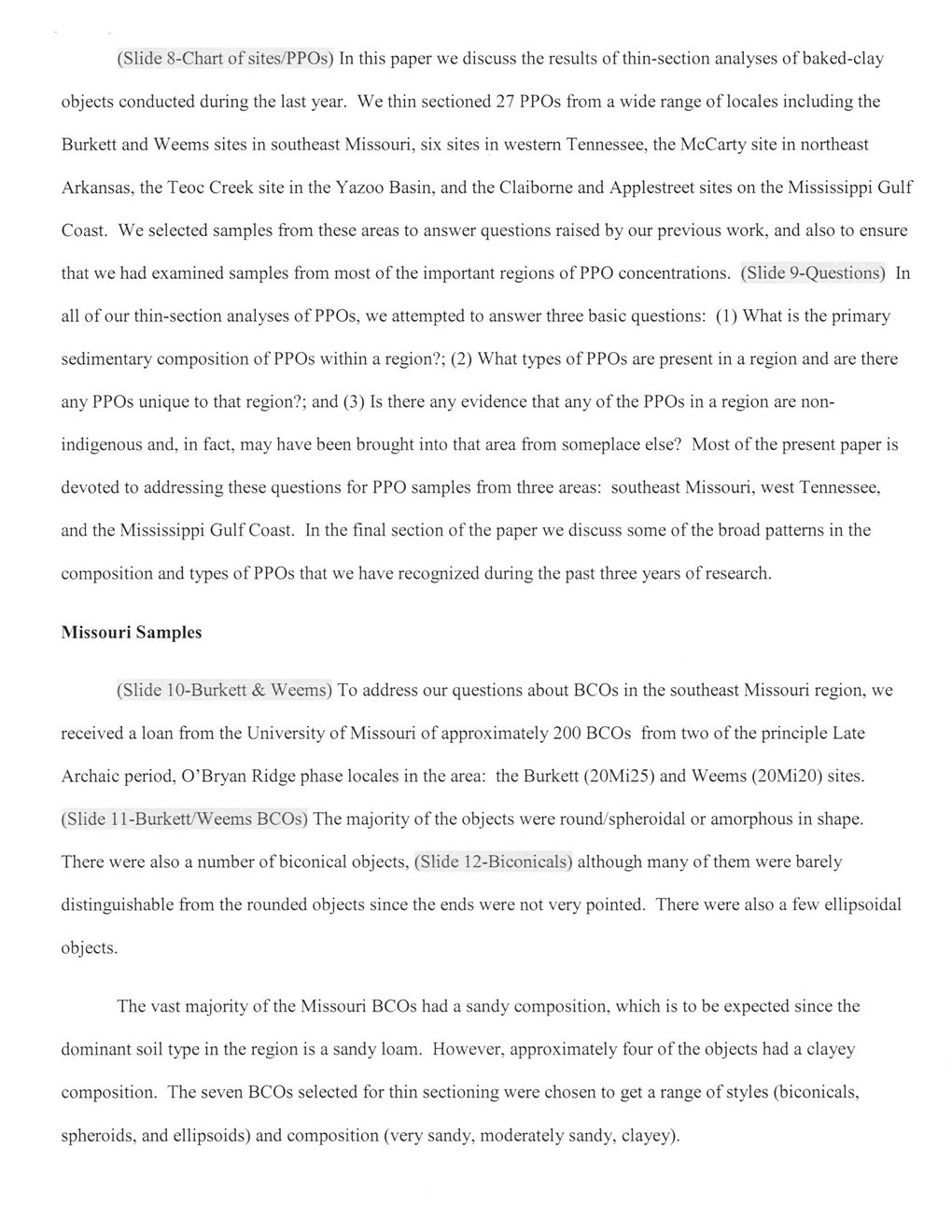This text was obtained via automated optical character recognition.
It has not been edited and may therefore contain several errors.
(Slide 8-Chart of sites/PPOs) In this paper we discuss the results of thin-section analyses of baked-clay objects conducted during the last year. We thin sectioned 27 PPOs from a wide range oflocales including the Burkett and Weems sites in southeast Missouri, six sites in western Tennessee, the McCarty site in northeast Arkansas, the Teoc Creek site in the Yazoo Basin, and the Claiborne and Applestreet sites on the Mississippi Gulf Coast. We selected samples from these areas to answer questions raised by our previous work, and also to ensure that we had examined samples from most of the important regions of PPO concentrations. (Slide 9-Questions) In all of our thin-section analyses of PPOs, we attempted to answer three basic questions: (1) What is the primary sedimentary composition of PPOs within a region?; (2) What types of PPOs are present in a region and are there any PPOs unique to that region?; and (3) Is there any evidence that any of the PPOs in a region are non-indigenous and, in fact, may have been brought into that area from someplace else? Most of the present paper is devoted to addressing these questions for PPO samples from three areas: southeast Missouri, west Tennessee, and the Mississippi Gulf Coast. In the final section of the paper we discuss some of the broad patterns in the composition and types of PPOs that we have recognized during the past three years of research. Missouri Samples (Slide 10-Burkett & Weems) To address our questions about BCOs in the southeast Missouri region, we received a loan from the University of Missouri of approximately 200 BCOs from two of the principle Late Archaic period, O’Bryan Ridge phase locales in the area: the Burkett (20Mi25) and Weems (20Mi20) sites. (Slide 11-Burkett/Weems BCOs) The majority of the objects were round/spheroidal or amorphous in shape. There were also a number of biconical objects, (Slide 12-Biconicals) although many of them were barely distinguishable from the rounded objects since the ends were not very pointed. There were also a few ellipsoidal objects. The vast majority of the Missouri BCOs had a sandy composition, which is to be expected since the dominant soil type in the region is a sandy loam. However, approximately four of the objects had a clayey composition. The seven BCOs selected for thin sectioning were chosen to get a range of styles (biconicals, spheroids, and ellipsoids) and composition (very sandy, moderately sandy, clayey).

Claiborne Historical Site Guerin-Giardino-(038)